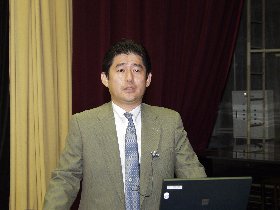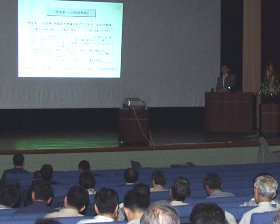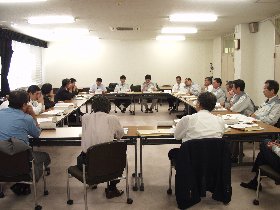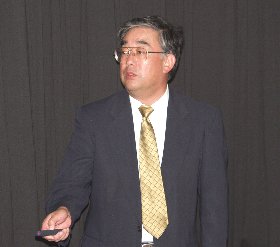|
|
 |
On 2nd September 2002, the 41st Safety Caravan visit was held at Tokai, Japan Atomic Energy Research Institute, which is located in Tokai-mura, Ibaraki Prefecture. |
Safety Presentation
|
About 140 persons, including the personnel of Tokai Research Establishment and cooperating companies, attended the Safety Presentation.
At the beginning of the Presentation, Mr. Tanaka, Director general of Tokai Research Establishment, gave an address and said "The Tokai Research Establishment was subjected to Peer Review in September last year and received a favorable evaluation. However, I do not think it is satisfactory to have been favorably evaluated regarding safety. We would like to reconfirm safety through this Safety Caravan." |

Mr. Otsuka
|
After the address, Mr. Umezu, Secretary-General of NSnet introduced NSnet activities, which was followed by a lecture entitled "Social Safety Activities Carried Out by the Nuclear Fuel Department of the Kansai Electric Power Co., Inc." delivered by Mr. Otsuka, Manager of Nuclear Fuel Quality and Safety Group, General Office of Nuclear Power, The Kansai Electric Power Co., Inc.
At the Kansai Electric Power Co., Inc., the problem of data falsification regarding the British Nuclear Fuels plc (BNFL) mixed-oxide (MOX) fuel assemblies manufactured by BNFL occurred about two and a half years ago, and this has been holding back the pluto-thermal programs. At the lecture, the discussion of how the Kansai Electric Power Co., Inc. is trying to regain social trust following the problem.
|
|

Safety Presentation
|
Safety information exchange session
|
|

Safety information exchange session
|

Mr. Wakashima
|
At the safety information exchange session, we asked Mr. Wakashima, Manager of the Administration Dept., Nippon Nuclear Fuel Development Co., Ltd. to give an in-depth explanation about the good practices cited by the peer review of Nippon Nuclear Fuel Development Co., Ltd. regarding "Improvement of the quality of education by analyzing and evaluating unsigned questionnaires answered in safety education courses"
The main information and opinions exchanged were:
- Wouldn't it be more suitable to give a test to examine the degree of understanding?
- Although we gave tests in the past, we decided to use unsigned questionnaires because it was difficult to balance the levels of trainees as there were office workers as well as engineers among them.
|
|
|







